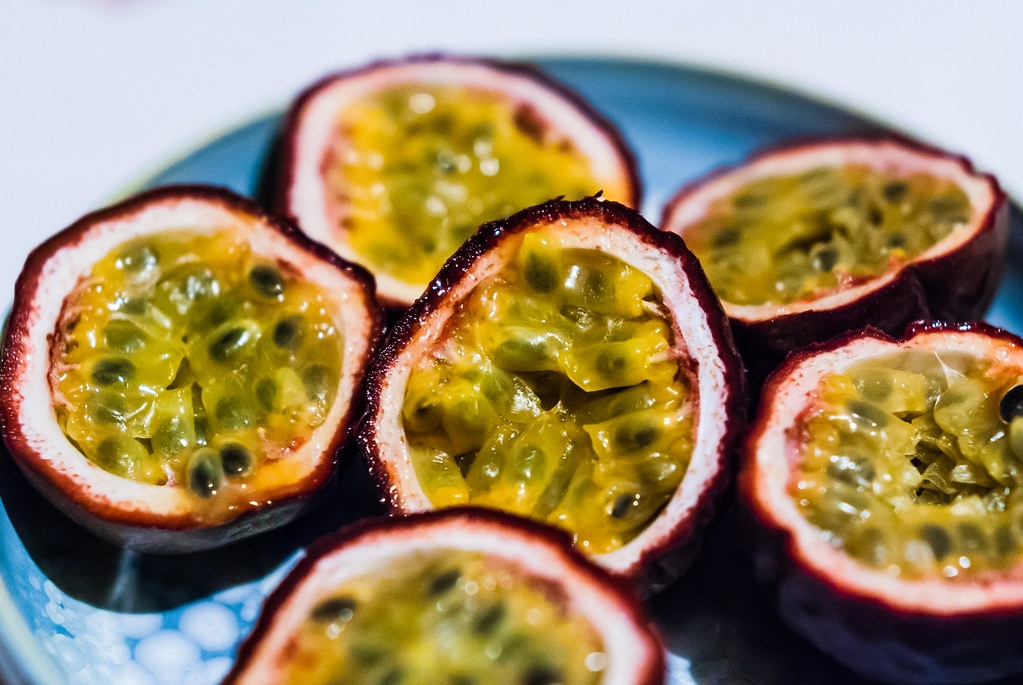
Introduction to Passion Fruit
Passion fruit is a tropical fruit grown in many countries in Africa, Asia, and the Americas. It is a large round fruit that grows on a vine with purple to yellow skin. Its flavor varies but it is usually tangy, sweet or tart, and aromatic. Passion fruit’s popularity can be attributed to its sweet flavor and antioxidant properties. It has been used for centuries as a remedy for skin irritations, constipation, anemia, and heartburn. Passion Fruit is the national fruit of Brazil. It is also the symbol of the city Rio de Janeiro because it was the first Brazilian fruit introduced in Europe in 1822 by Rio de Janeiro Botanical Garden director Carl Friedrich Philipp von Martius.
Location & Soil Prerequisites
The best location for growing passion fruit is in a temperate climate with significant rainfall throughout the year. It’s a common misconception that passion fruits grow in grapevine plants, but they actually grow on the vines which are located in the soil. The soil must be at least eight inches deep and have enough nutrients to provide for a healthful passion fruit plant.
Planting PassionFruit
Passion fruit is a tropical fruit that is native to South America, but they grow well in warmer climates. They are an excellent source of antioxidants and vitamins, making them high in nutrition.
Passion fruit trees can grow up to 40 feet tall. In order for the plants to produce fruit, their roots cannot be more than 12 inches below the surface of the soil or they will not flower. They do not tolerate frosty conditions well and should be planted in a warm climate with rain when possible. The trees can grow well in a pot or on a deck if they get enough moisture.
The passion fruit is known for its beautiful flowers that bloom before the fruit forms on the tree itself. The leaves are ovate-shaped and pointed with serrated edges and grow 2-6 inches long.
Watering & Fertilizing Passion Fruit
Passionfruit is a tropical plant. It needs a minimum of 8 hours of sun exposure per day and should be watered and fertilized regularly to grow well.
It is important to water the plant every few days or so to keep it from drying out and wilting. To water, the plant, use a watering can with a long spout for more accurate targeting. Fertilizing should be done about once a month with either fish emulsion or liquid fertilizer for plants, which can be found at many nurseries or home improvement stores.
Harvesting Passion Fruit, Ripe Fruit, Storage, and Other Considerations
Passion fruit is a tropical fruit that can grow year-round in warmer climates. Harvesting is generally done by hand but sometimes it requires ladders.
Passionfruit grows on vines and the berries can be harvested by hand or using a ladder if they are too high up. There are two types of passion fruit: sweet and sour. They have a flavor similar to grapefruit with an acidic tang, and they are usually eaten fresh.
They will continue to ripen after picking, so harvesting too early can result in unpalatable fruit with little flavor.
For optimum taste, harvest the ripe fruits when the skin is glossy and they yield to gentle pressure when picked from their stems. After harvesting, store them in a cool place out of direct sunlight at room temperature for up to two weeks.






